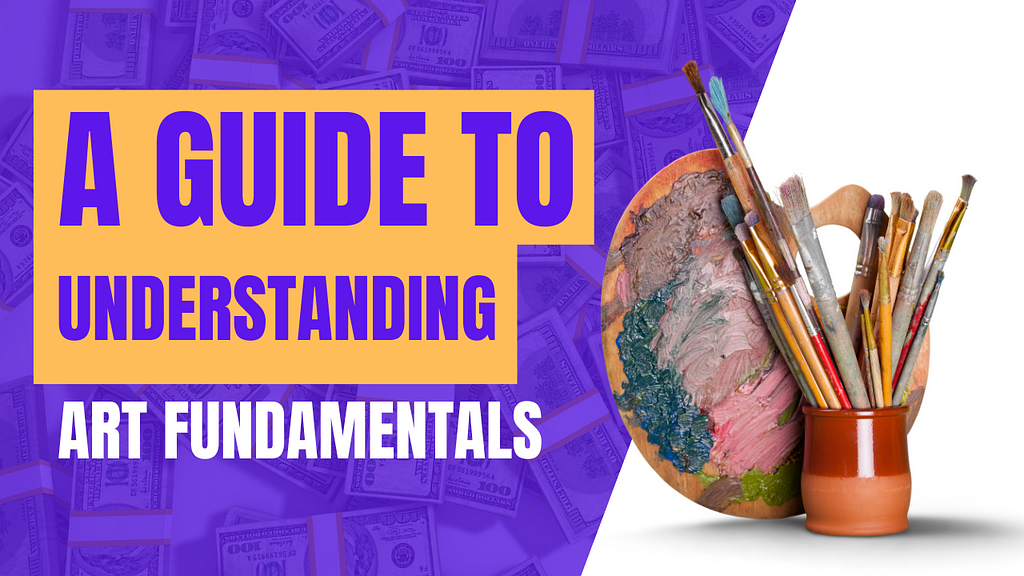
Before artists embark on creating masterpieces, they must first grasp the fundamentals of art. Just as a musician learns scales and a writer masters grammar, understanding art fundamentals is essential for any aspiring creator. This guide will explore the key principles that form the bedrock of artistic expression, providing insights and examples to help you master the basics and build a strong foundation for your artistic journey.
Line: The Building Block of Composition
Lines are the fundamental element of art, forming the basis for all visual compositions. They can be straight, curved, diagonal, or organic, and their arrangement influences the overall structure of an artwork. Take Leonardo da Vinci’s sketches, such as “Vitruvian Man,” where lines define the proportions of the human body, showcasing the power of this basic element.
Shape: Creating Visual Interest
Shapes are formed when lines enclose a space. Understanding shapes is crucial for creating visual interest and balance in your artwork. Consider Henri Matisse’s “The Dance,” where bold, organic shapes convey a sense of movement and rhythm, illustrating how shape can be used to evoke emotions and tell a story.
Form: Adding Dimension to Art
Form adds depth to shapes, transforming two-dimensional objects into three-dimensional representations. Artists use shading and highlights to create the illusion of volume. An excellent example is Michelangelo’s sculpture “Pieta,” where the careful modeling of marble brings lifelike form to the figures, showcasing the mastery of sculptural techniques.
Value: Playing with Light and Shadow
Value refers to the lightness or darkness of a color. It is a crucial element for creating contrast and depth in an artwork. Rembrandt’s “The Night Watch” is a masterclass in the use of value, with its skillful manipulation of light and shadow to emphasize certain elements, guiding the viewer’s attention within the composition.
Color: Eliciting Emotion and Atmosphere
Color is a powerful tool for expressing emotions and setting the mood in art. Artists use the color wheel, temperature, and saturation to convey meaning. Vincent van Gogh’s “Starry Night” is a testament to the emotional impact of color, with its swirling blues and yellows evoking a sense of turbulence and beauty.
Texture: Adding Tactile Elements
Texture refers to the surface quality of an object, and artists can create the illusion of different textures through various techniques. In Grant Wood’s “American Gothic,” the smooth texture of the subjects’ faces contrasts with the detailed texture of their clothing and the rough texture of the building, adding layers of visual interest.
Space: Creating Depth and Perspective
Understanding space is vital for creating a sense of depth and perspective in art. Artists use techniques like overlapping, size variation, and atmospheric perspective to convey spatial relationships. In Leonardo da Vinci’s “The Last Supper,” the careful use of perspective creates the illusion of a vast, architectural space behind the figures.
Composition: Guiding the Viewer’s Eye
Composition is the arrangement of visual elements in an artwork. A well-designed composition leads the viewer’s eye through the piece and emphasizes focal points. Johannes Vermeer’s “Girl with a Pearl Earring” showcases a balanced composition, with the subject’s gaze and the subtle play of light drawing attention to the earring and creating a harmonious visual experience.
In the realm of art, mastering the basics is not a mere starting point; it’s the very essence of creative prowess. The principles of line, shape, form, value, color, texture, space, and composition form the scaffolding upon which artistic brilliance stands. Aspiring artists who embrace these fundamentals embark on a journey of self-discovery, unlocking boundless possibilities for expression. With a solid foundation, one’s creative voice gains clarity and power, resonating in the vast landscape of artistic exploration.
A Guide to Understanding Art Fundamentals was originally published in Educartion on Medium, where people are continuing the conversation by highlighting and responding to this story.